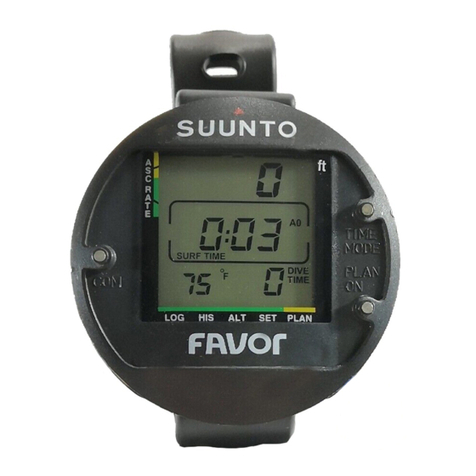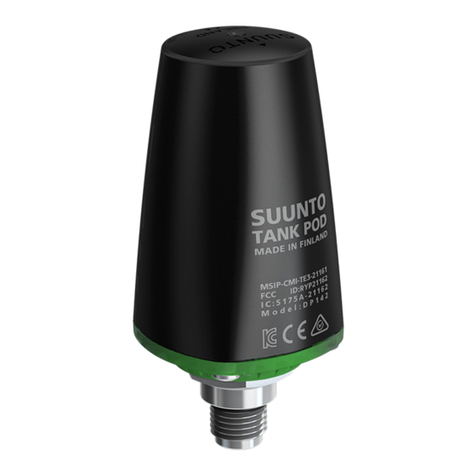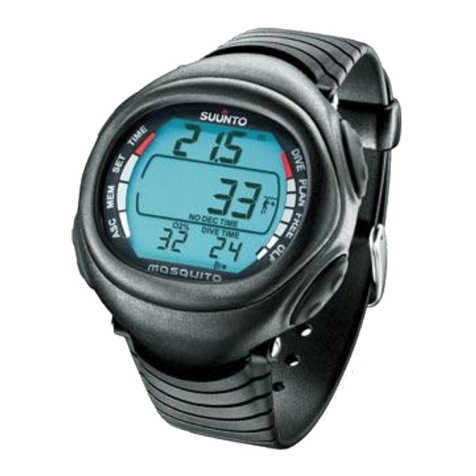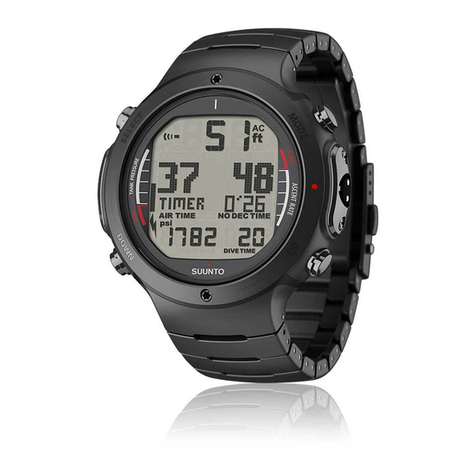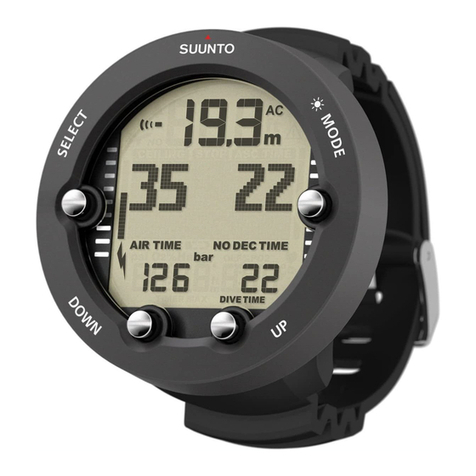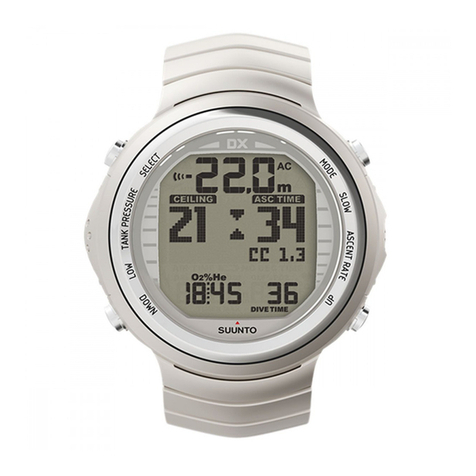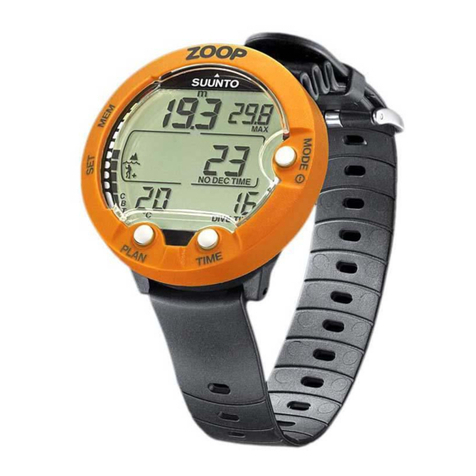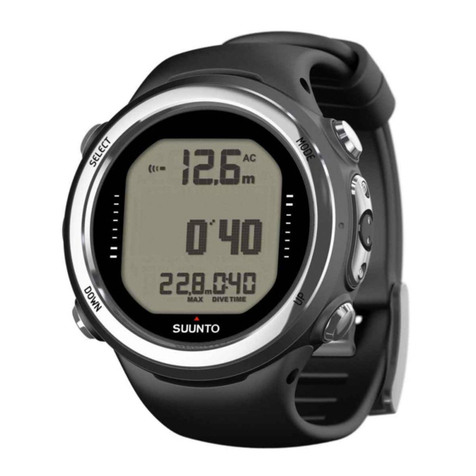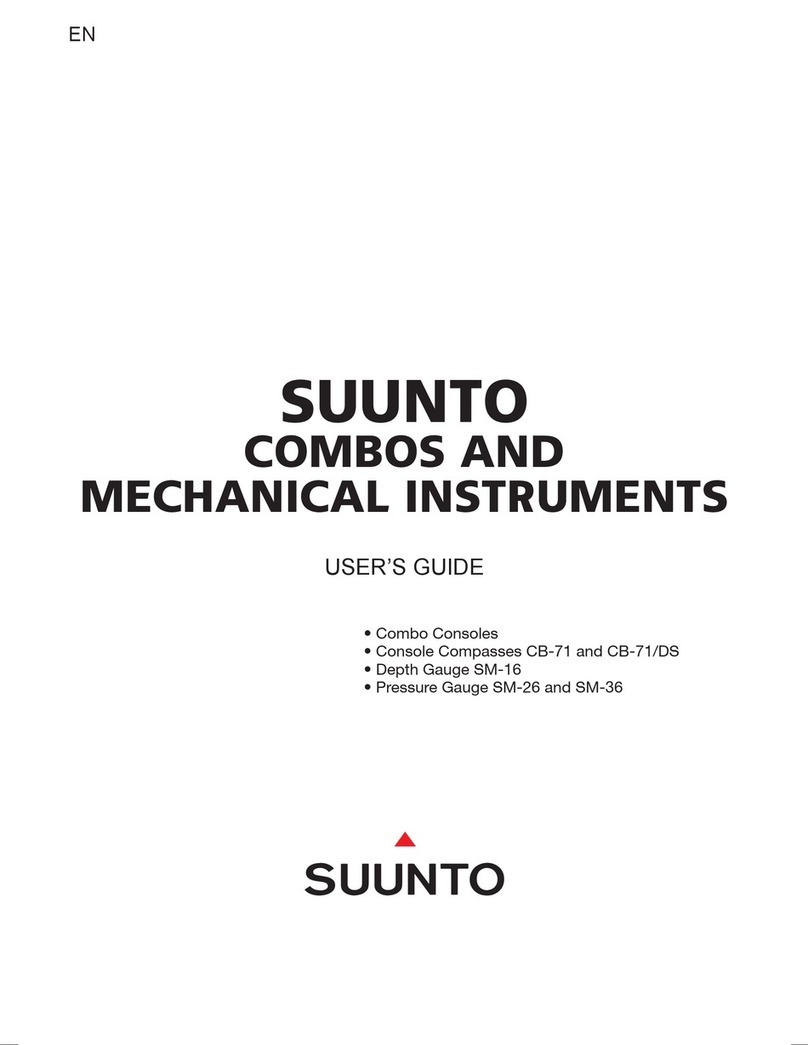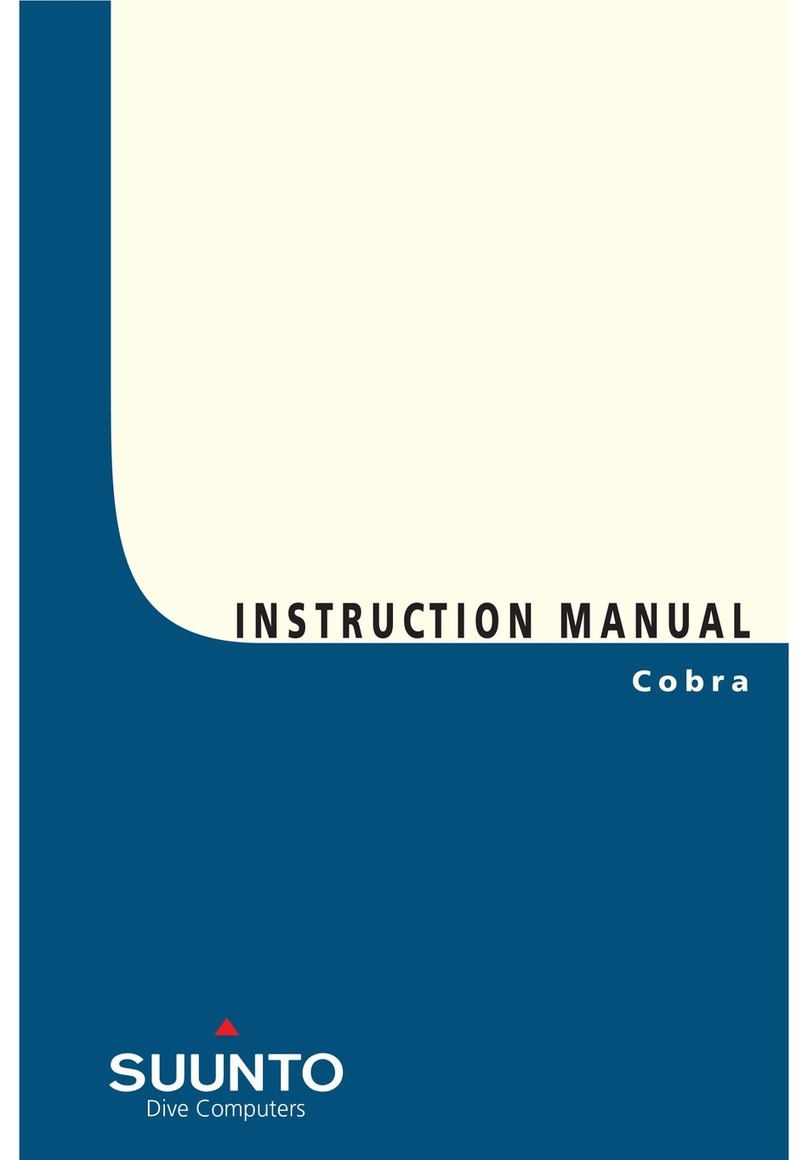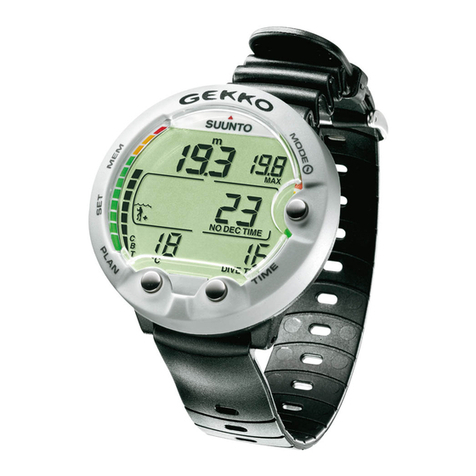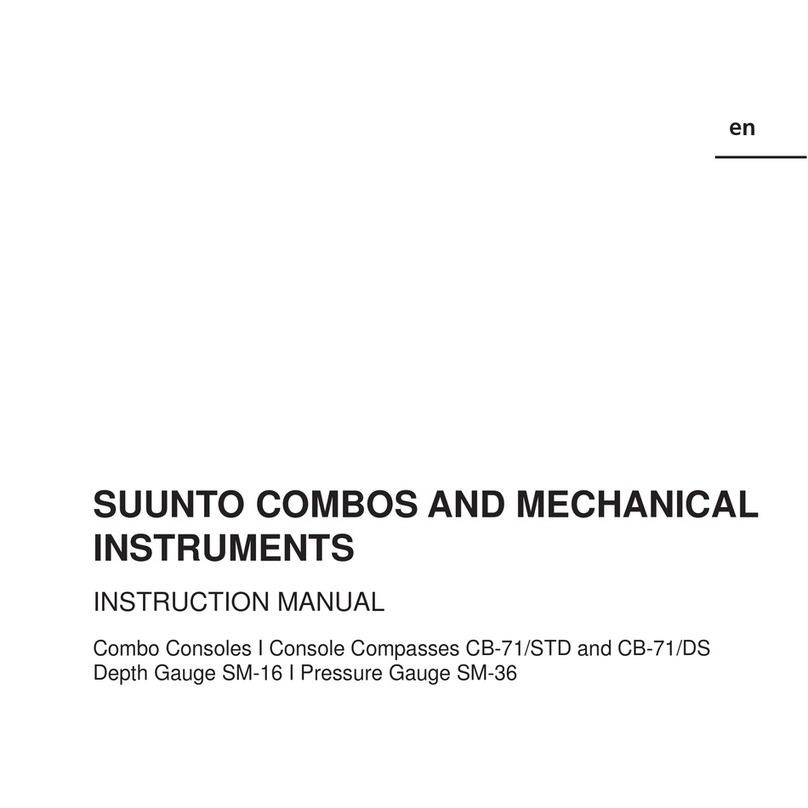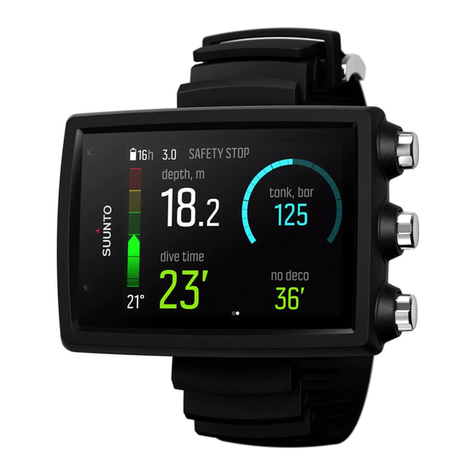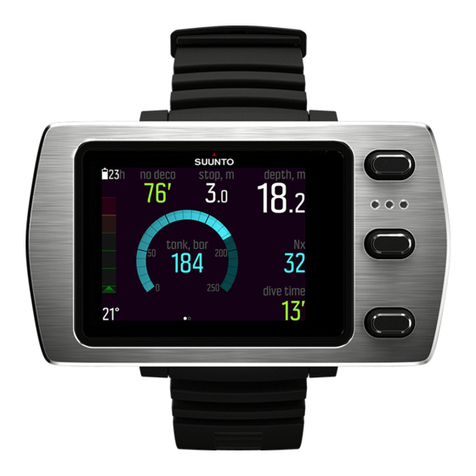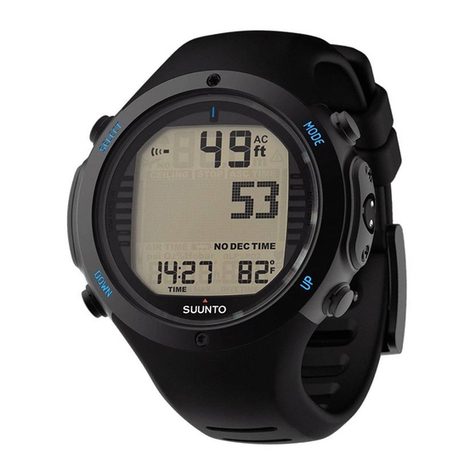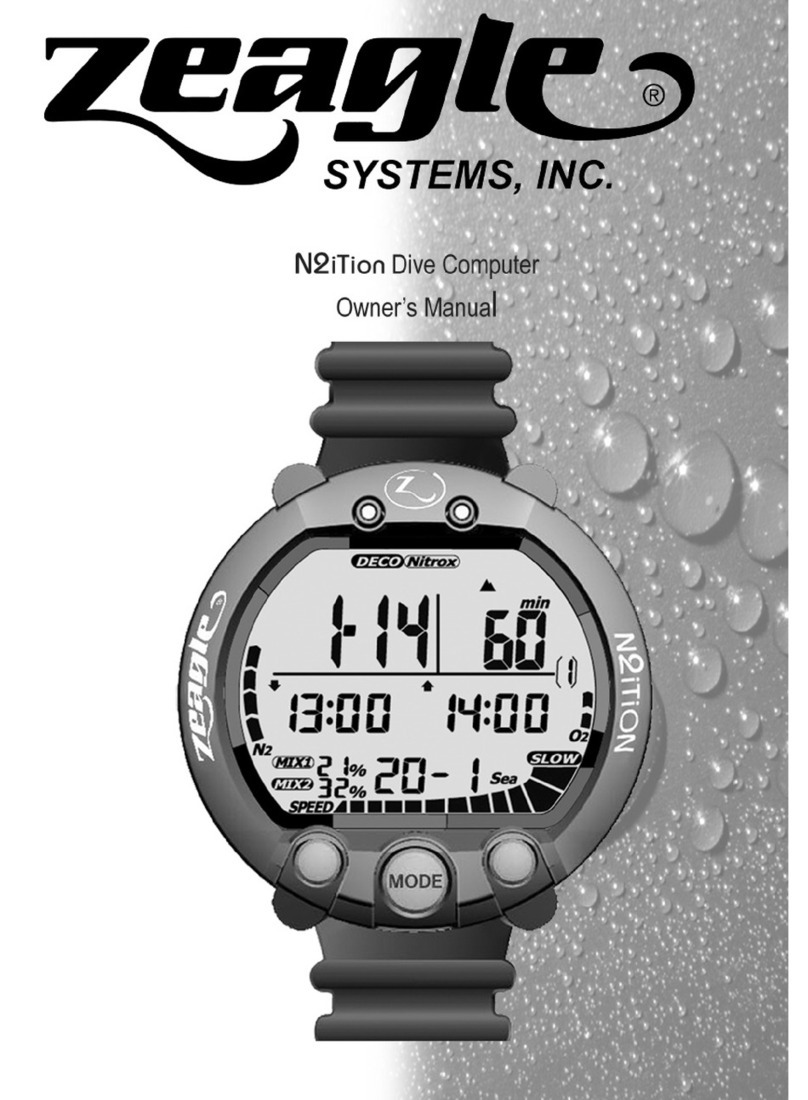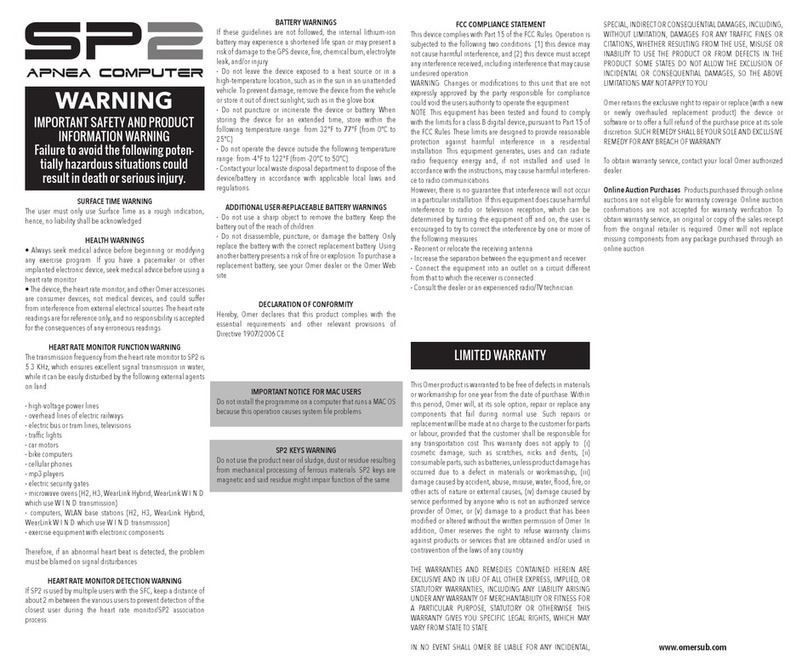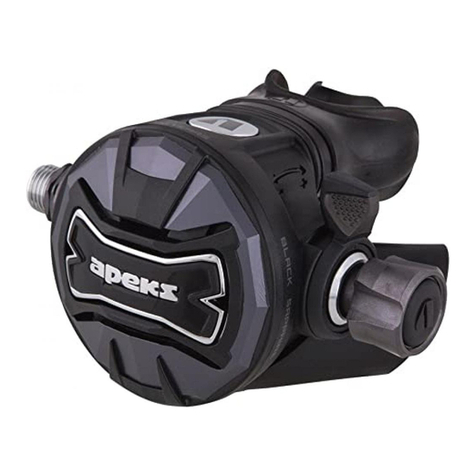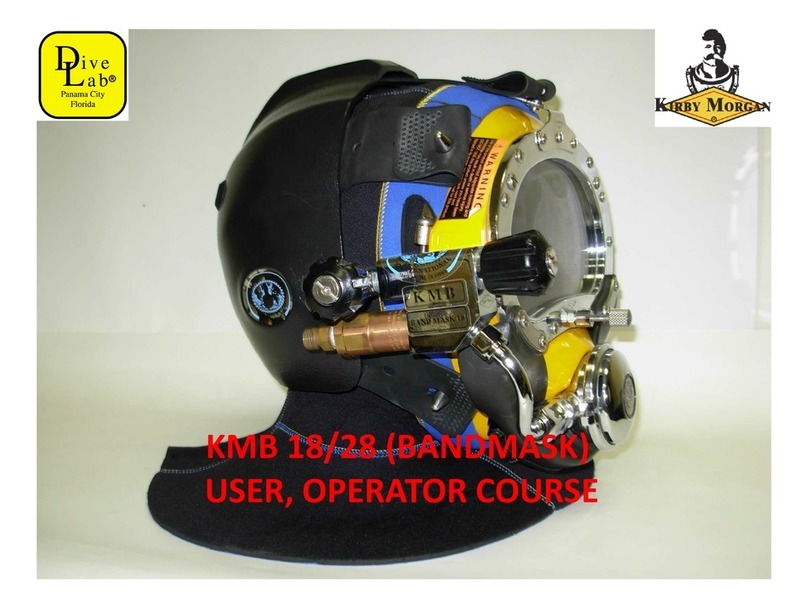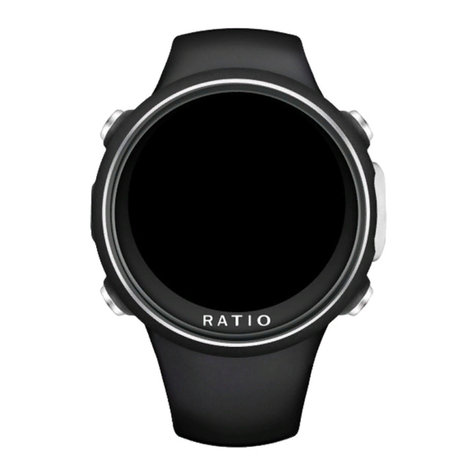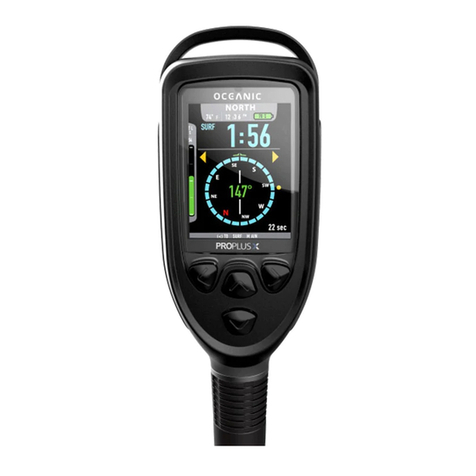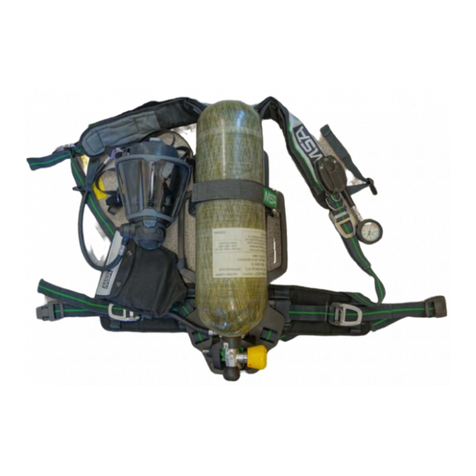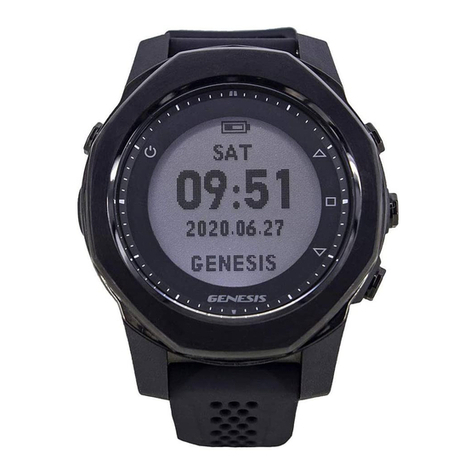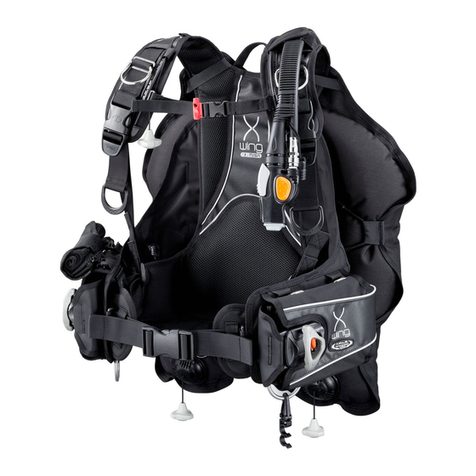4
TABLE OF CONTENTS
WARNINGS ....................................................................................3
1. INTRODUCTION .......................................................................6
1.1. SAFETY PRECAUTIONS ............................................................6
1.1.1. Emergency Ascents .....................................................................8
1.1.2. Dive Computer Limitations ........................................................9
1.1.3. Enriched Air and Safety ..............................................................9
2. GETTING ACQUAINTED ....................................................... 10
2.1. FUNCTIONS ...............................................................................10
2.2. PUSH BUTTONS ........................................................................10
2.3. WATER CONTACTS...................................................................12
3. DIVING WITH THE DIVE COMPUTER................................ 13
3.1. BEFORE DIVING .......................................................................13
3.1.1. Activation and Prechecks ..........................................................13
3.1.2. Battery Power Indicator and Low Battery Warning..................15
3.1.3. Dive Planning [PLAN] .............................................................16
3.1.4. User Definable Functions and Alarms ......................................17
3.2. DIVING WITH AIR.....................................................................18
3.2.1. Basic Dive Data ........................................................................18
3.2.2. Consumed Bottom Time (CBT)................................................19
3.2.3. Safety Stop Displays .................................................................20
3.2.4. Ascent Rate Indicator ................................................................21
3.2.5. Decompression dives ................................................................23
3.3. DIVING WITH ENRICHED AIR NITROX ...............................27
3.3.1. Before Diving............................................................................27
3.3.2. Oxygen Displays.......................................................................29
3.3.3. Oxygen Limit Fraction (OLF)...................................................30
3.4. GAUGE MODE ...........................................................................31
3.5. AT THE SURFACE......................................................................32
3.5.1. Surface Interval.........................................................................32
3.5.2. Dive Numbering........................................................................33
3.5.3. Flying After Diving...................................................................34
3.6. AUDIBLE AND VISUAL ALARMS ..........................................35
3.7. HIGH ALTITUDE DIVES AND PERSONAL ADJUSTMENT.37
3.7.1. Altitude Adjustment ..................................................................37
3.7.2. Personal Adjustment .................................................................38
3.8. ERROR CONDITIONS ...............................................................40

